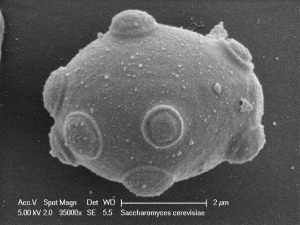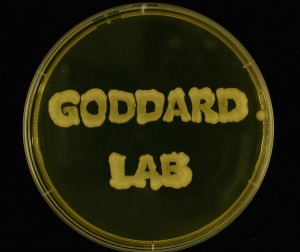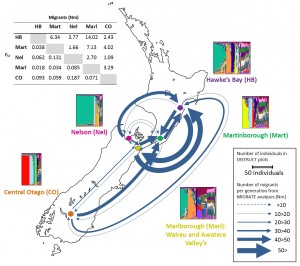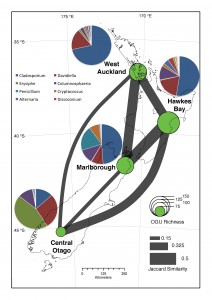Research Area

My group is interested in testing ideas describing ecological and evolutionary processes, and we primarily do this using an experimental approach. Most of our work focuses on some aspect of population or community biology. We generally examine how the actions (or lack of action) of natural selection affect the short-term ecological dynamics and longer-term evolutionary trajectories of populations.
Current research interests:
- Patterns and processes in agricultural ecosystems
- Patterns of fungal community distribution
- Drivers of fungal community assemblage
- Yeast:fly interactions and coevolution
- Local and global population genetic patterns and processes in Saccharomyces cerevisiae
- Phenotypic variance in Saccharomyces cerevisiae
The group is always keen to hear from enthusiastic research students, please email me with a CV and statement of research interests. I am now based in the United Kingdom, at the University of Lincoln, but retain a position and laboratory in Auckland.
Experimental Organisms
 We mostly work with populations and communities of yeasts and fungi since these are experimentally tractable. Whilst microbial, yeasts are eukaryotes that mostly exist as diploids and have a full sexual cycle. Yeasts have quick generations times (hours for mitosis and days for meiosis), are easily propagated in the laboratory in defined environments, may easily be manipulated (genetically or otherwise), are easily stored in suspended animation, and are easy to assay for a variety of relevant population biology parameters. In addition many yeast species are extremely well genetically characterised, and are easily genetically scrutinised and manipulated: one species, Saccharomyces cerevisiae, is arguably the best-characterised eukaryotic organism.
We mostly work with populations and communities of yeasts and fungi since these are experimentally tractable. Whilst microbial, yeasts are eukaryotes that mostly exist as diploids and have a full sexual cycle. Yeasts have quick generations times (hours for mitosis and days for meiosis), are easily propagated in the laboratory in defined environments, may easily be manipulated (genetically or otherwise), are easily stored in suspended animation, and are easy to assay for a variety of relevant population biology parameters. In addition many yeast species are extremely well genetically characterised, and are easily genetically scrutinised and manipulated: one species, Saccharomyces cerevisiae, is arguably the best-characterised eukaryotic organism.
This affords a broad scope of experimental work on aspects of ecology and evolution not possible with other organisms.We do not only examine population processes in the laboratory. Fungi are seemingly ubiquitous and we also examine communities and populations outside of the lab. We use these to test ideas attempting to describe the diversity and distribution of fungi, and use these as proxies for generalising to fundamental processes that operate on all populations.
We are now moving to evaluate broader diversity in ecosystems using next generation sequencing technologies. We are interested in revealing patterns and processes in natural and agricultural systems, and have published work on variance in total fungal communities in space, and the forces that determine this, as well as quantifying the population fluxes of individual species in these ecosystems.
Lastly, we are also interested in examining species interactions both between yeasts, and between yeasts and other organisms, in particular we are interested in understanding better the forces that drive mutualisms.
New Zealand Wine
Yeasts are important in an industry of economic and cultural value in NZ due to their role in wine production. This means some of the work we do also has value in this area. Much of the work we do involves examining and understanding fungal communities and populations involved in the natural production of grapes and the natural fermentation of these into wine. Interestingly the ‘ecology of wine’ is poorly understood and classically little researched. We attempt to fuse both fundamental and applied research in the hope that a better characterisation and understanding of the microbial aspects of wine production in NZ will:
- allow us to better understand and manage the beneficial and detrimental microbes involved in wine production;
- add to the ‘story’ behind NZ wine and add to its distinctiveness (and thus value); and
- provide novel tools for NZ winemakers to craft higher quality wines that more faithfully reflect their origin.
One output from the research group includes the development of the first NZ derived wine yeast FrootZen®.



